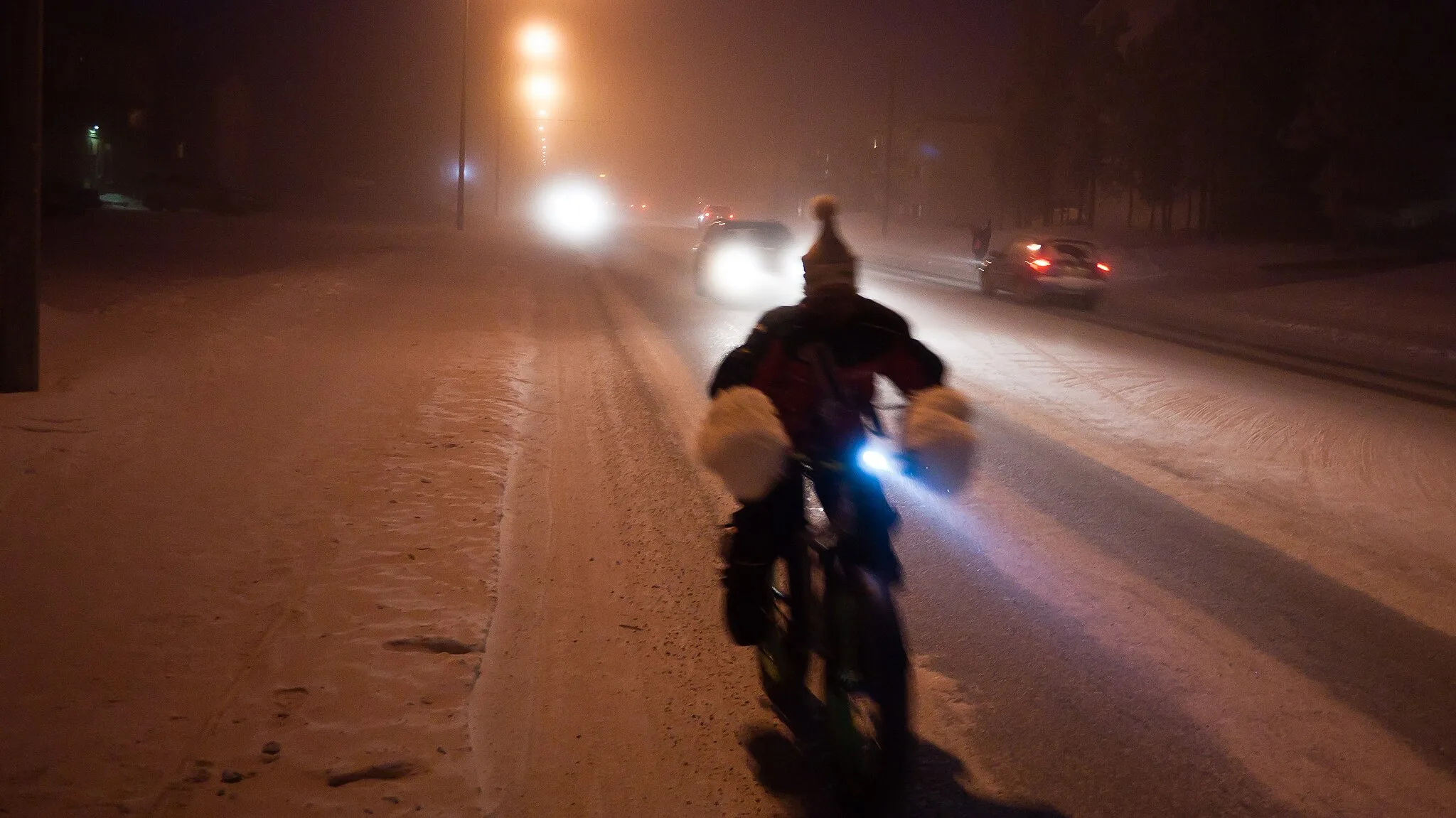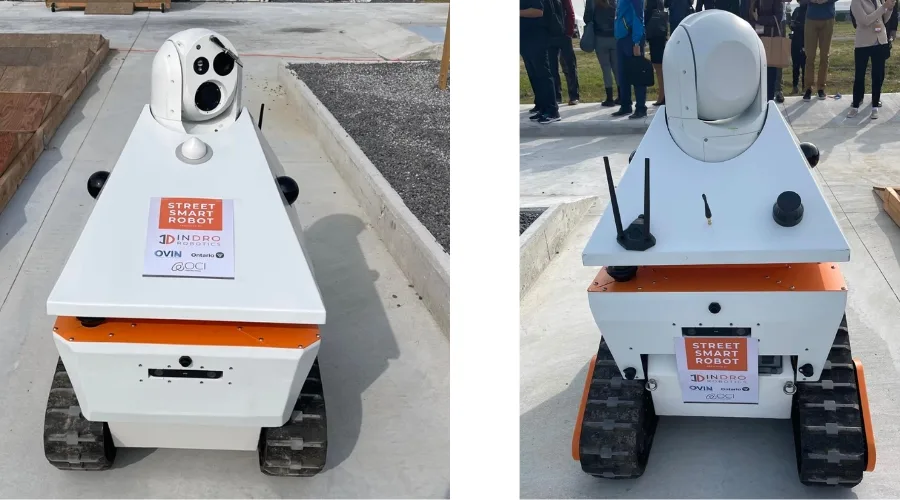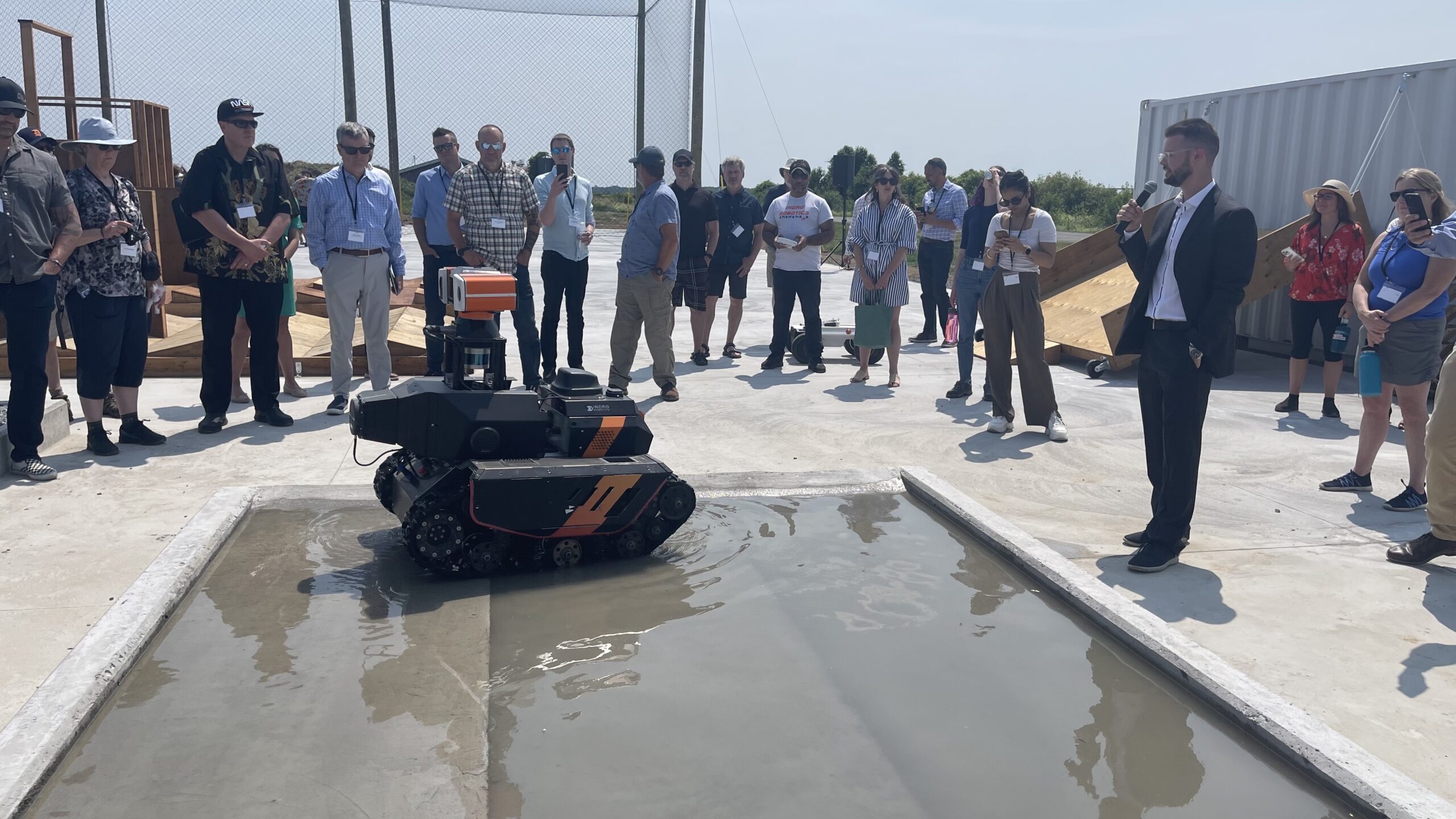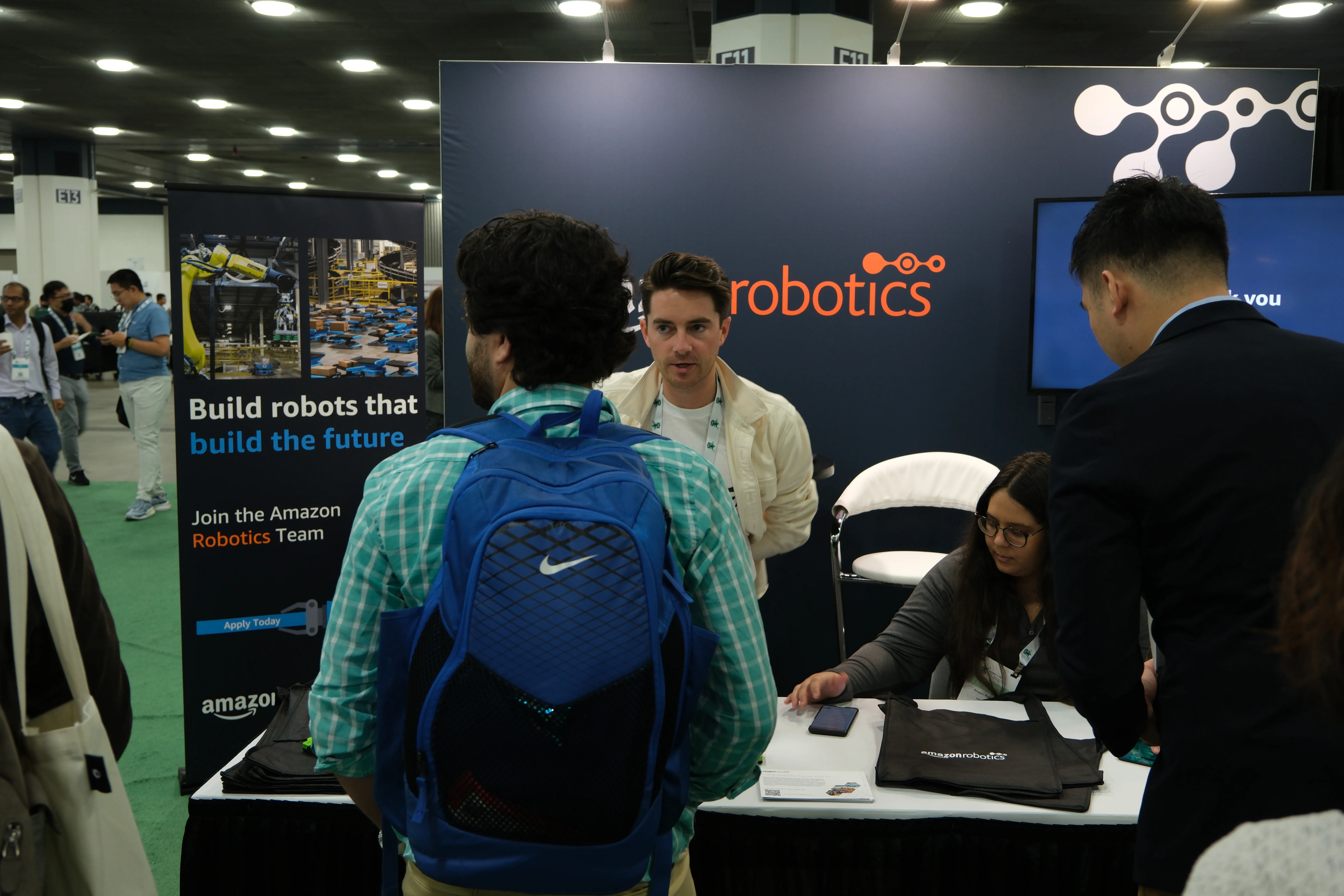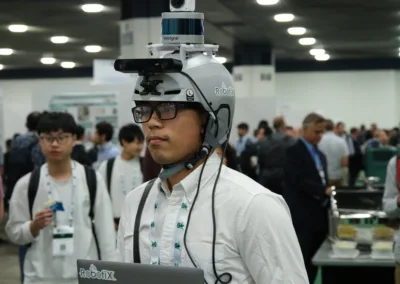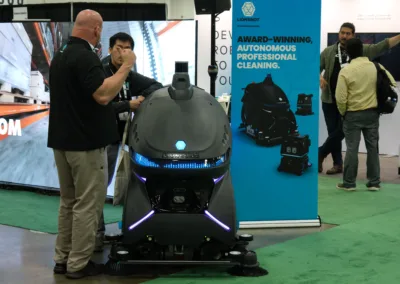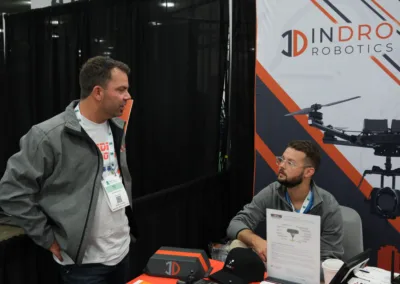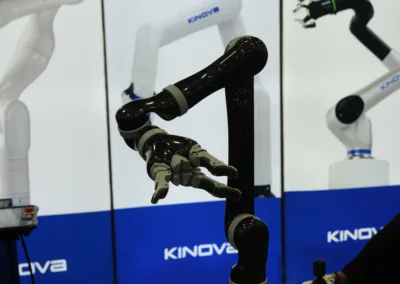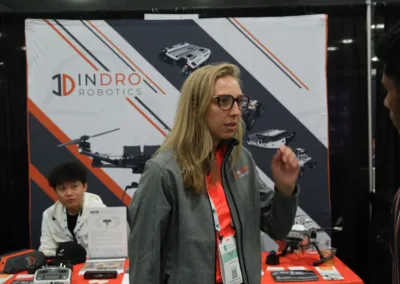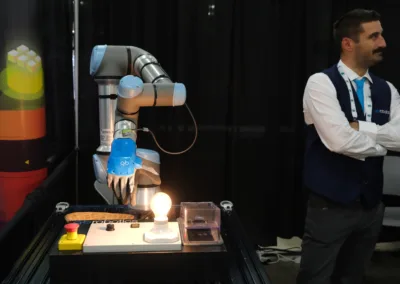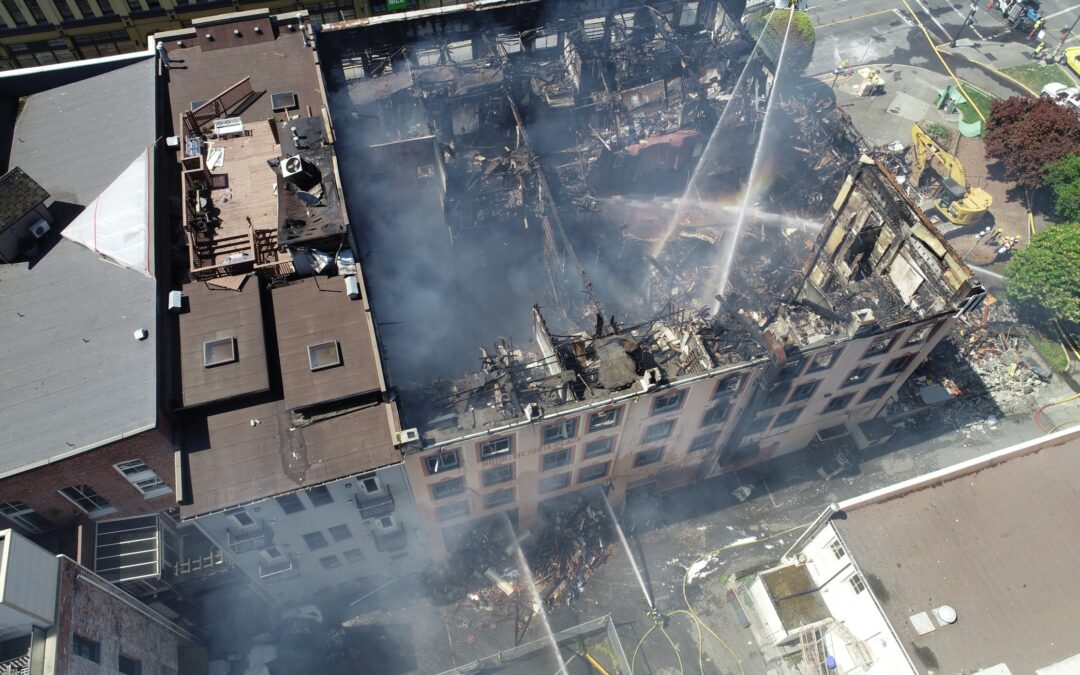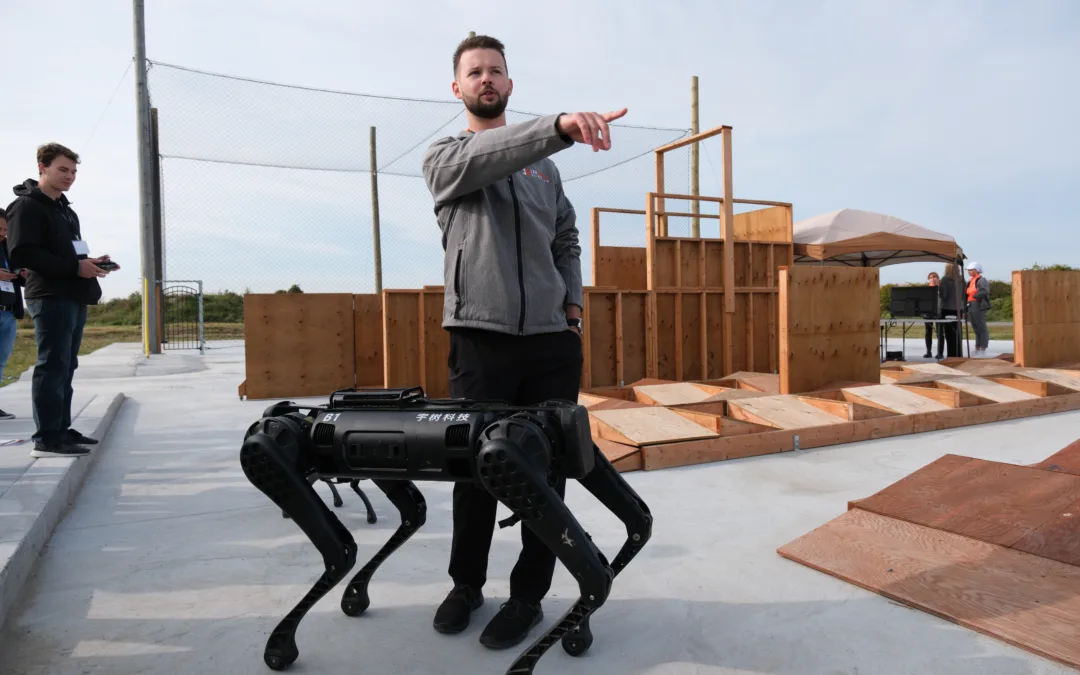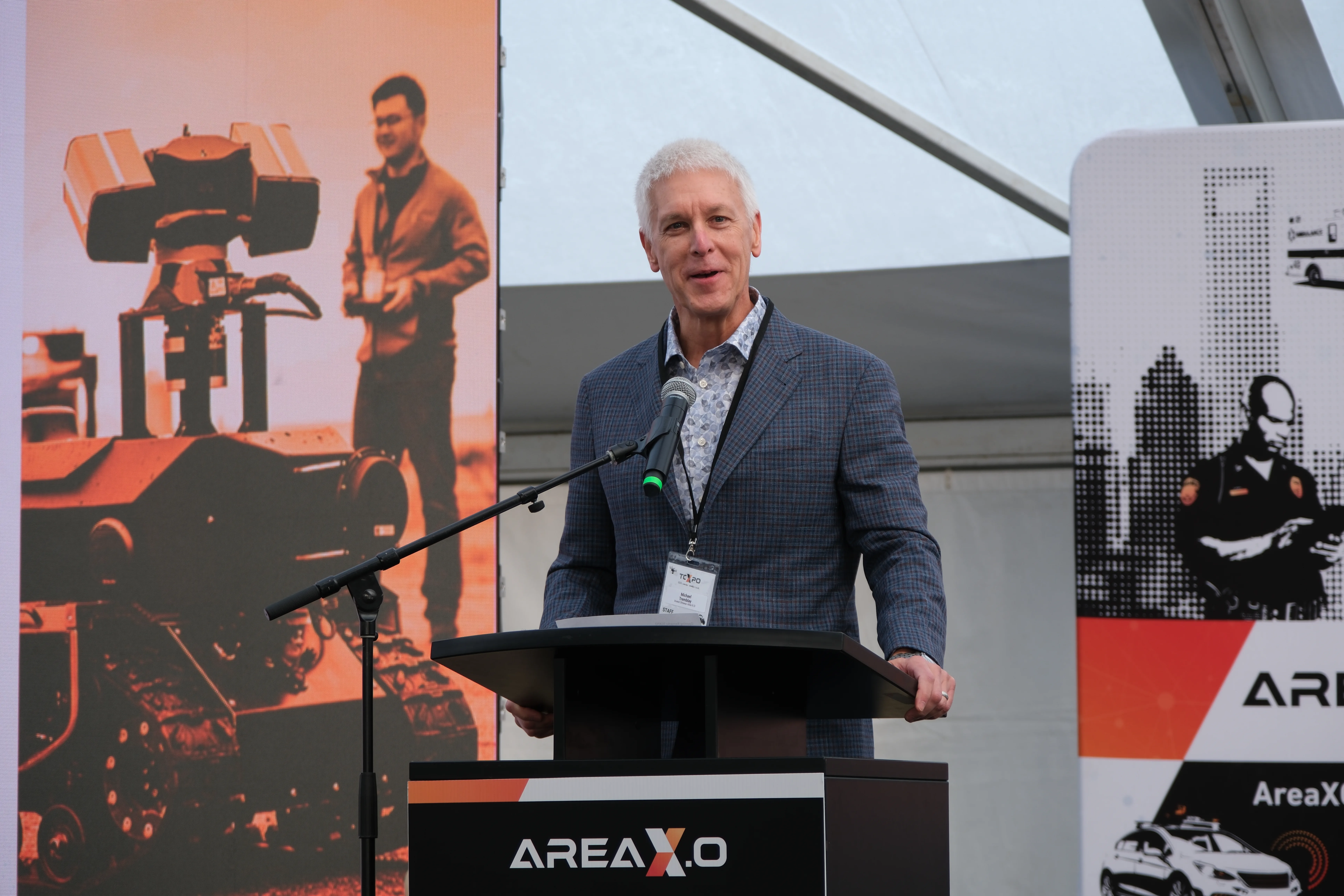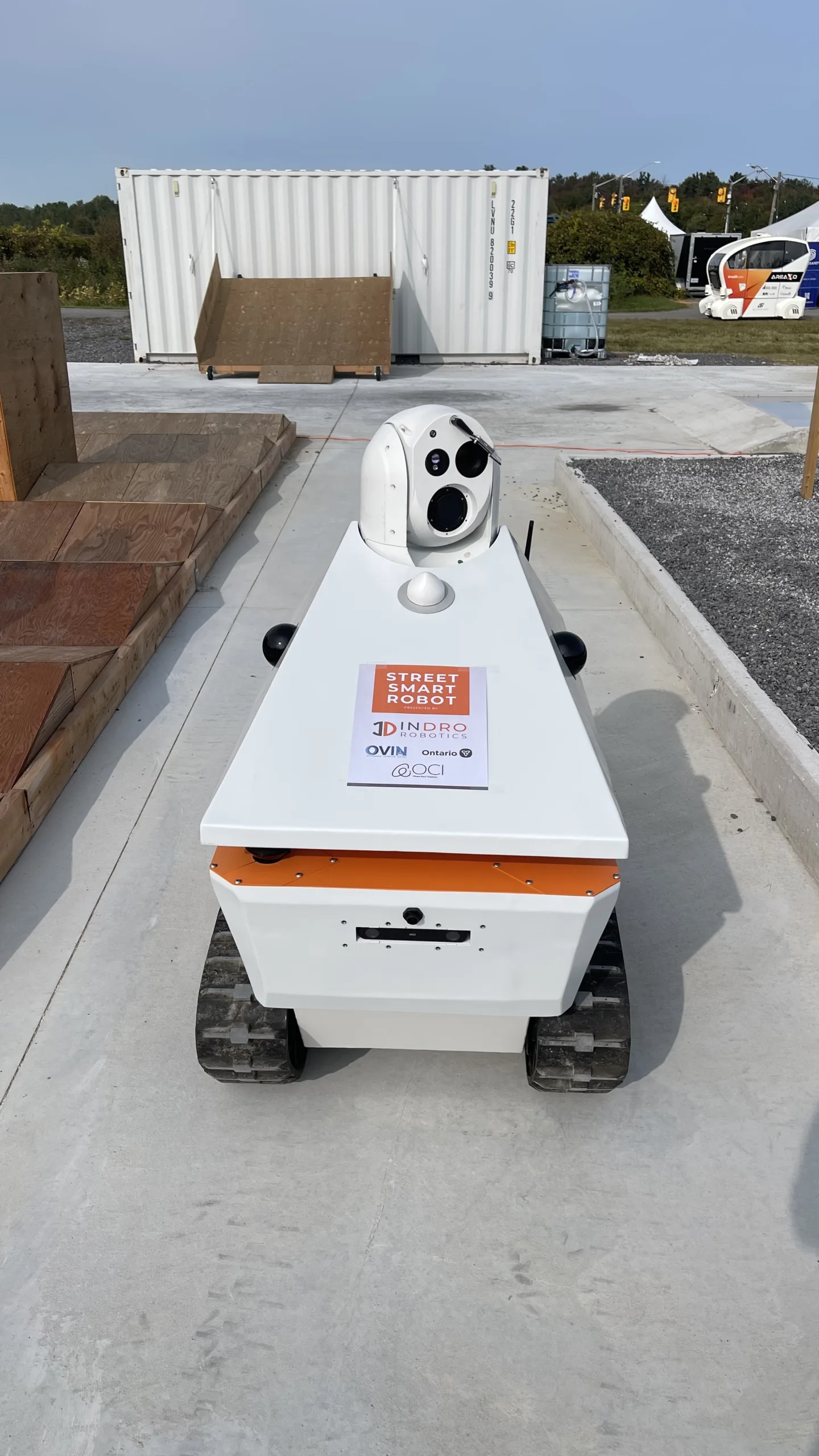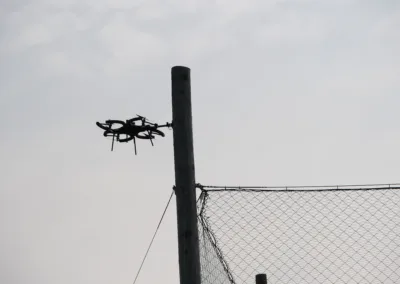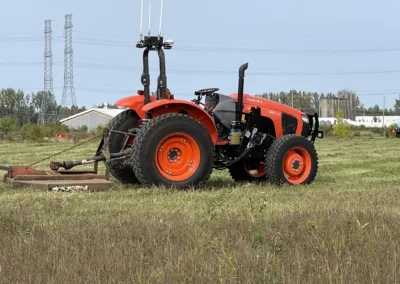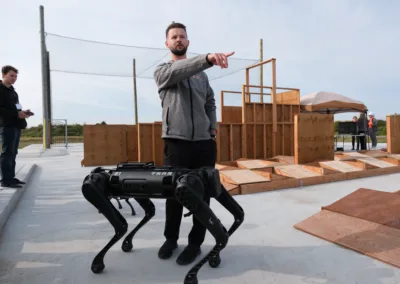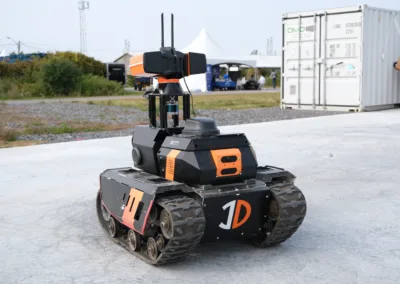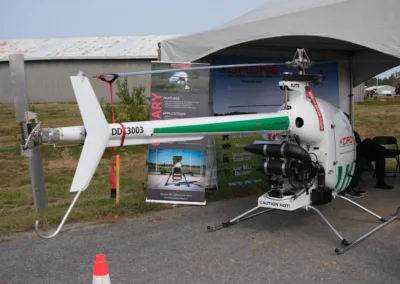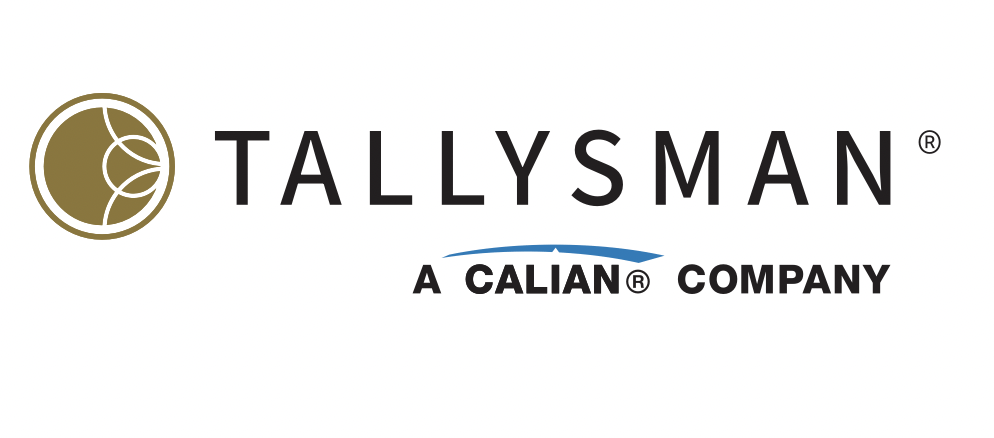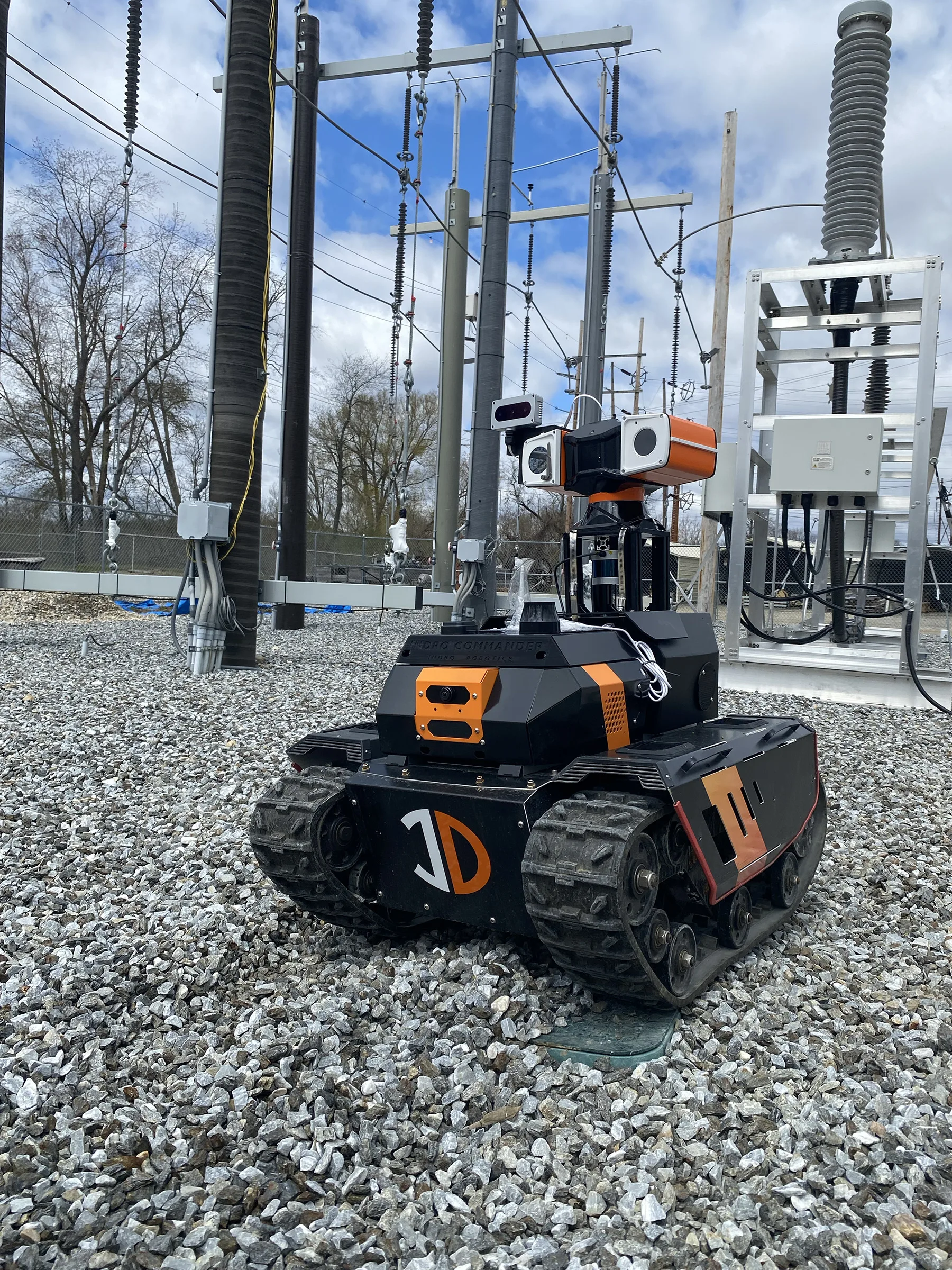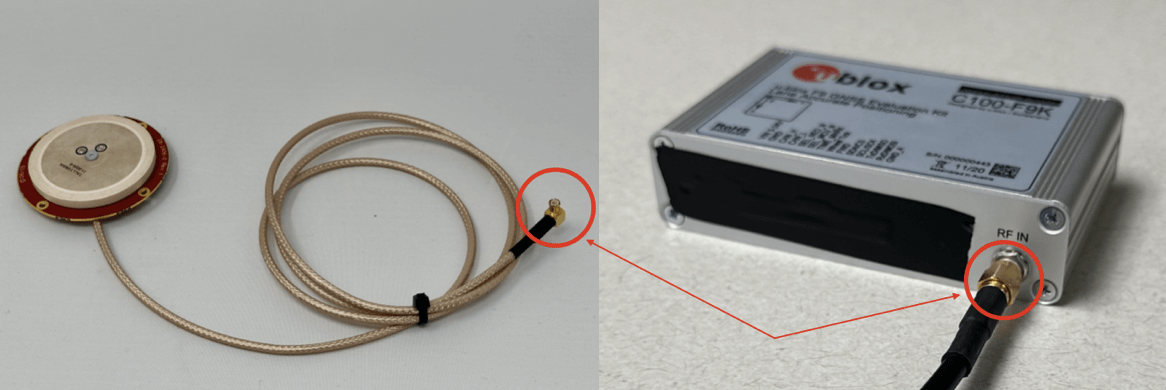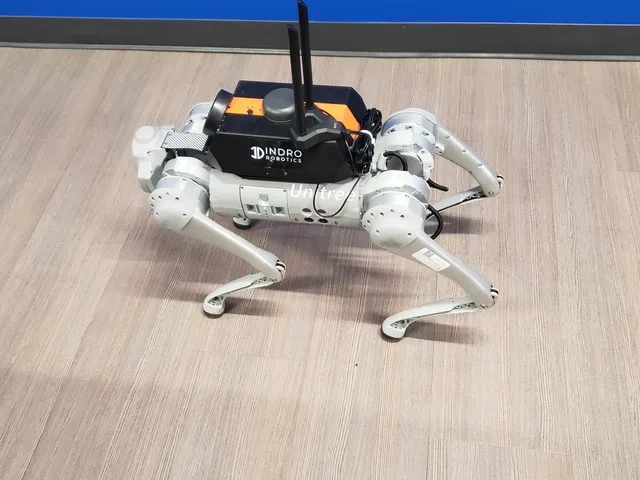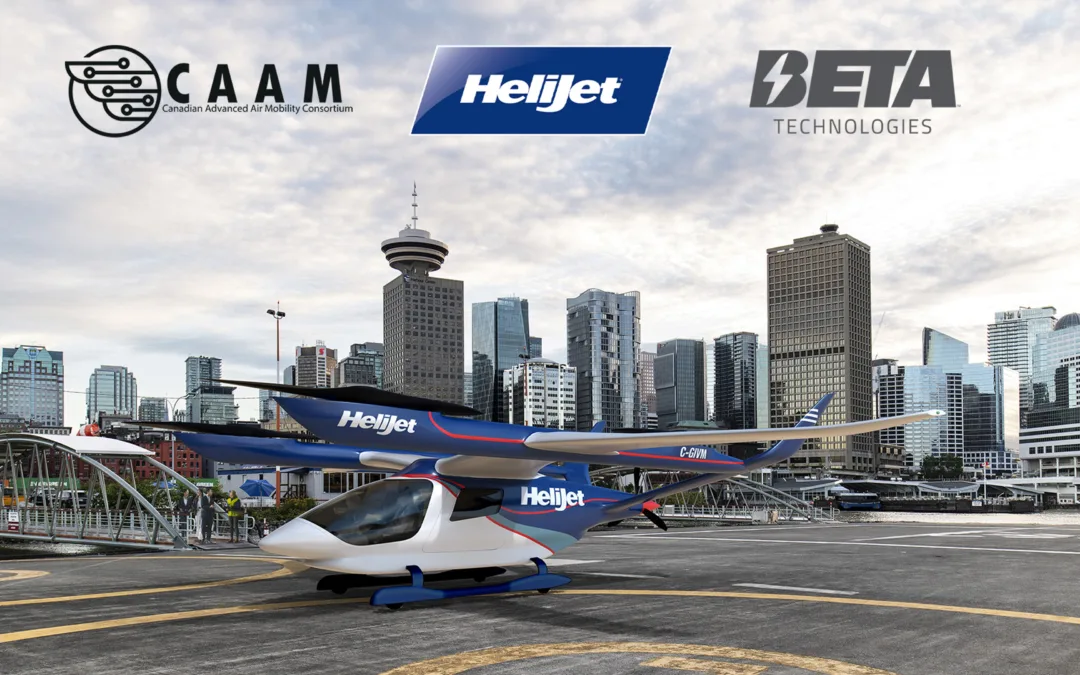
BC’s Helijet announces purchase of eVTOL in Advanced Air Mobility milestone
By Scott Simmie
Canada has just taken a major step forward into the coming world of Advanced Air Mobility, or AAM.
Vancouver-based Helijet International, Inc. has announced the purchase of an eVTOL aircraft for crewed operations in British Columbia. The ALIA 250 eVTOL (electric Vertical Takeoff and Landing) is manufactured by US-based BETA Technologies and will bring a critical step toward sustainable passenger flight to Helijet, as well as service to additional locations.
The announcement took place at Helijet’s facility in Vancouver on October 31 and was attended by BC Premier David Eby, Helijet CEO Danny Sitnam, BETA’s Skye Carapetyan, as well as JR Hammond, the Executive Director of the Canadian Advanced Air Mobility Consortium (CAAM). Indro Robotics CEO Philip Reece was also there for the announcement, as InDro is an Industry Partner in CAAM and has partnered with Helijet on other AAM initiatives (more on that later).
“This provincial government recognizes the potential of advanced air mobility to decarbonize the aviation sector, improve regional connectivity, improve emergency response times and introduce new manufacturing opportunities in our province,” said Premier Eby. “We congratulate Helijet on their exciting news and look forward to British Columbia becoming a leader in the Advanced Air Mobility sector.”
Though the aircraft is not yet certified, flight testing in the US is well underway. BETA intends to certify the aircraft for Instrument Flight Rules (IFR) operations. Eventually, the aircraft will supplement the existing Helijet fleet – offering additional services to locations where the higher cost of traditional helicopter operations have traditionally made flights impractical.
“The introduction of eVTOL aircraft will not only enhance the passenger experience but also elevate Helijet’s capacity to provide essential services such as emergency response, air ambulance, and organ transfers,” says a news release issued by CAAM.
“This innovation is a crucial step forward in enhancing the overall well-being of communities in the Lower Mainland and remote regions.”
As an example of how the new eVTOL will help, Helijet CEO Danny Sitnam looked ahead to urgent medical deliveries between Vancouver hospitals “at a much lower cost, with no carbon footprint, and a quieter environment for the people below.”
Before we dive in, here’s a look at the aircraft. And while this graphic was created for the news release, don’t worry – the BETA ALIA 250 is very much a real machine.
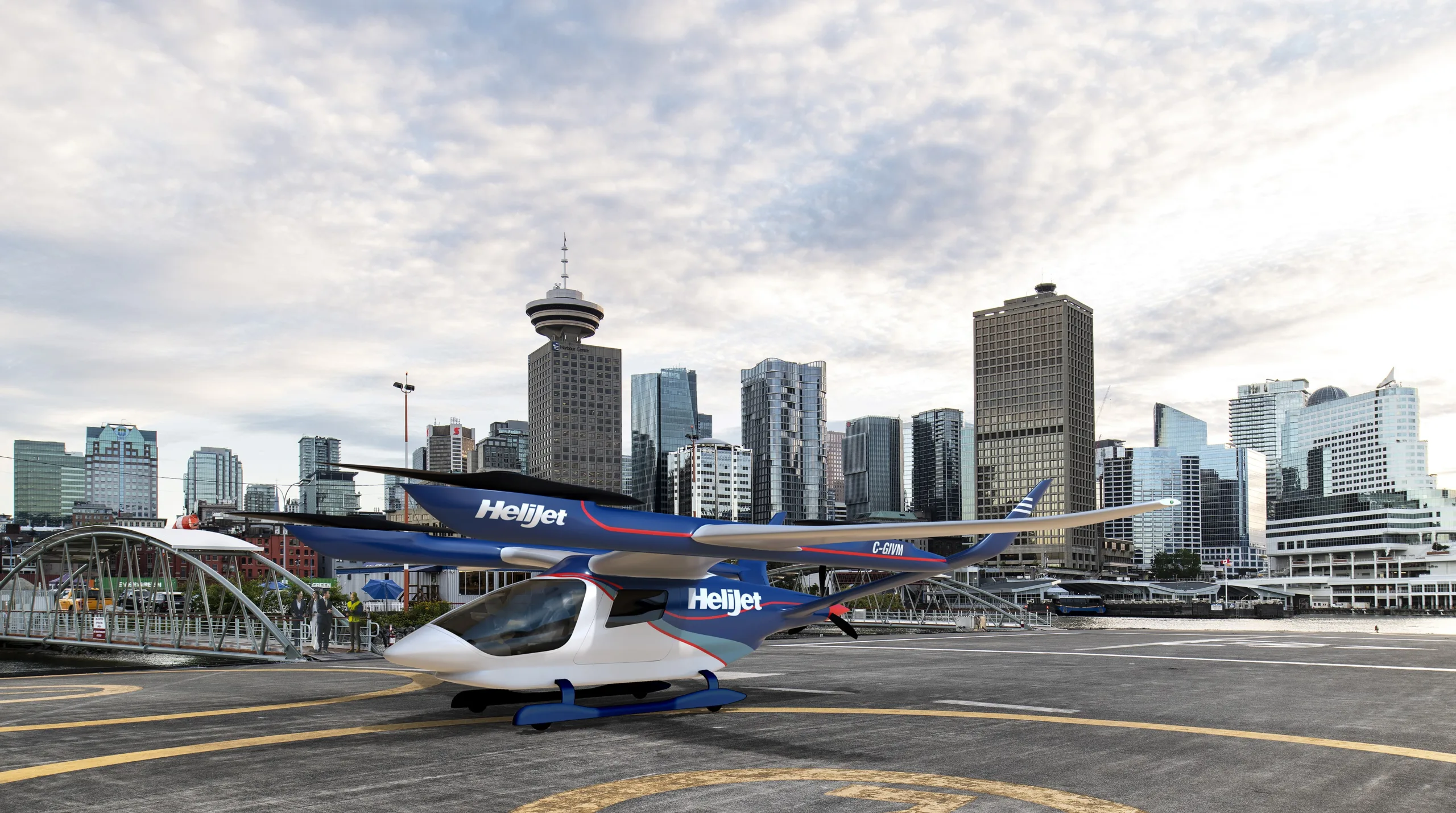
ABOUT AAM
You’ve perhaps heard of Advanced Air Mobility. If you haven’t, here’s a little primer.
You can think of AAM as the next evolution in air transport. We like this high-level definition from BAE Systems:
“Advanced Air Mobility (AAM) is an air transport system concept that integrates new, transformational aircraft designs and flight technologies into existing and modified airspace operations.”
Those new innovative aircraft designs will have a low carbon footprint, and generally fall within these three design categories:
- Electric Vertical Take-off and Landing (eVTOL). You can think here of air taxis, patient transfers, cross-town trips in dense urban areas, and more. These machines will take off and land from Vertiports, which have a small footprint advantageous to urban centres
- Electric Conventional Take-Off & Landing (eCTOL). These would be electrified or hybrid fixed-wing aircraft that still require runways but are more efficient to operate (and much greener) than conventional aircraft. Likely used for short trips, carrying passengers and cargo from regional and rural locations.
- Small Unmanned Aircraft Systems (sUAS). You can think here of drones, or Uncrewed Aerial Vehicles (UAVs). These will be commonplace delivering critical goods and medical supplies, both within urban centres and to nearby communities. They will share controlled airspace with other traditional aircraft, though their operations will likely be restricted to designated flight corridors to avoid any conflict.
Initially, the transition to the world of AAM will involve crewed aircraft in the eVTOL and eCTOL space. In other words, there will be a human being piloting those aircraft. As the system and technologies advance, however, automation will take on a greater role, Pilots will be on board monitoring those autonomous flights, until a stage is reached where the flights are fully autonomous.
That’s a ways down the road. But the gears of this machinery are very much in motion. The FAA already has a blueprint for AAM and flight corridors. A large number of companies are working on new and innovative aircraft designs utilising electric, hybrid and hydrogen fuel-cell propulsion. And the Canadian Advanced Air Mobility Consortium (CAAM) is working closely with regulators and the industry to advance the transition.
Speaking of CAAM, we also like its AAM definition:
“Advanced Air Mobility (AAM) is the evolution of air transportation created by an ecosystem of new technologies allowing people, goods, and services to move within urban and regional areas safely.”
And let’s not forget about the low carbon footprint. That’s also a big part of this revolution. Canada (and many other countries) have committed to Net Zero carbon emissions by the year 2050. That means our economy is expected to achieve that goal either by switching to technologies that emit no greenhouse gas emissions – or activities that offset those emissions (such as tree planting).
And while long-range passenger jets pose a greater technological challenge when it comes to electrification or hybrid power sources, there’s a lot of air traffic in urban areas. Plus, the use of green aircraft for goods delivery reduces the reliance on internal combustion-based ground vehicles. InDro Robotics, for example, has flown COVID test supplies from remote island communities by drone, as well as prescription medications to isolated communities. These deliveries would have traditionally relied on ground transport and ferries.
If you’re interested in learning more about AAM, we’ve written a pretty extensive primer here.
Now let’s get back to Helijet.
Below: The BETA ALIA 250 in a hover test:
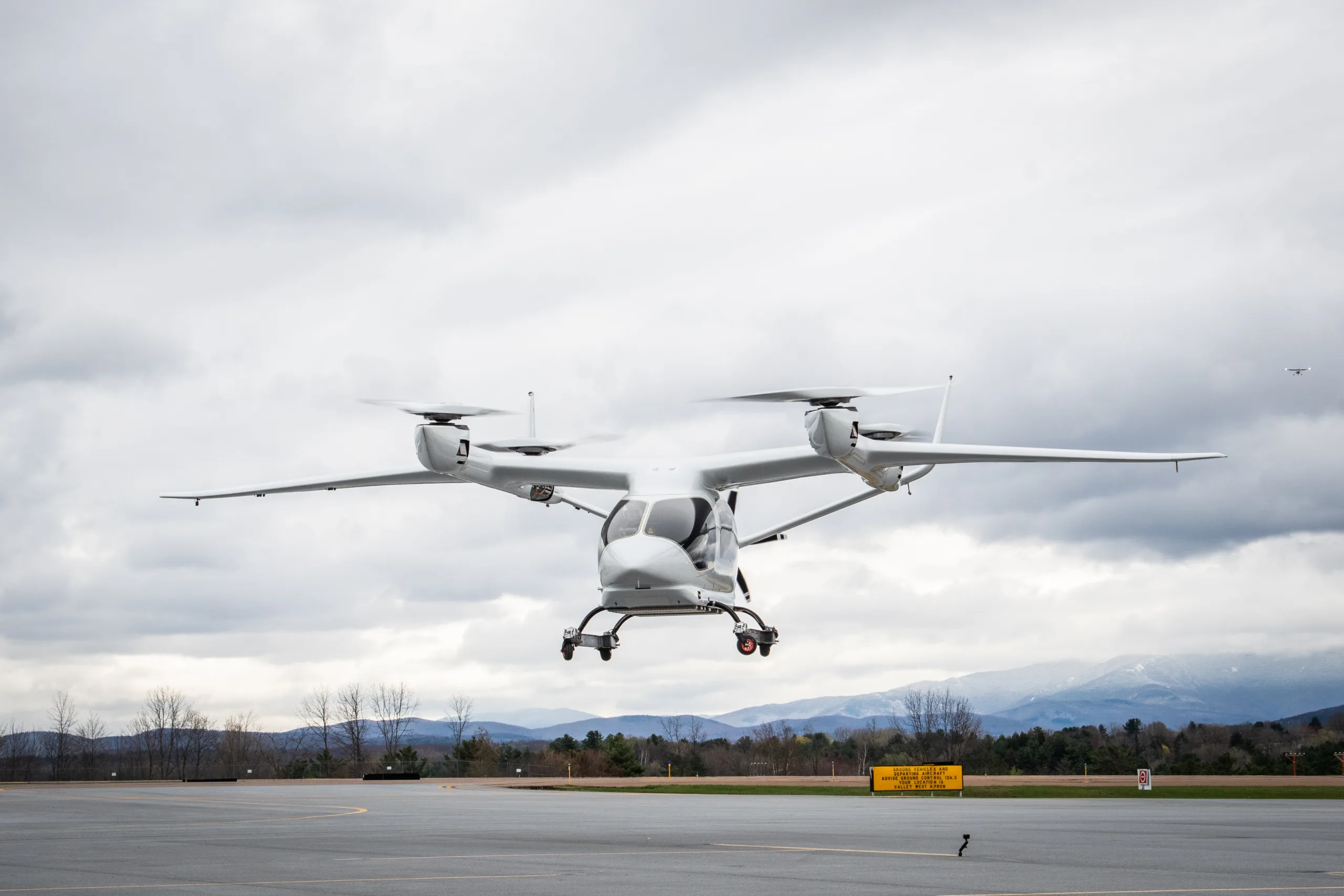
THE BETA ALIA 250
BETA is building two aircraft: The eVTOL purchased by Helijet, as well as a cTOL – an electric, fixed-wing aircraft that requires a runway. Both employ a patented electric propulsion system and utilise batteries with a high energy density. They also each have a wingspan of just over 15 metres (50 feet) and can carry five passengers (or equivalent cargo) plus a pilot.
BETA started with a small but highly committed team. In less than 10 months, its first full-scale prototype, AVA, went from the drawing board to crewed test flights. Since then, BETA has grown considerably and received significant investment. In 2019, it began work on the ALIA aircraft. The company says its design was inspired by the Arctic Tern; engineers say biomimicry played a role in the design of the aircraft’s wings and long sweeping tail.
While BETA partnered with many suppliers for components of the aircraft, the company developed its own proprietary electric motor (no small feat). In 2021, ALIA flew its maiden crewed flight.
It wasn’t long before the design started catching the attention of others. UPS ordered 10 ALIA aircraft – and reserved 140 more. The US Air Force was impressed enough that it issued a special Military Flight Release. This allowed the company to carry out experimental flights with the Air Force. BETA also closed a $368M Series A funding round; Amazon’s Climate Pledge Fund was one of the investors. So the company has been on an impressive trajectory.
The company builds its own charging cubes, which will be installed much like Tesla chargers. In fact, the ALIA cTOL flew 2400 miles (3840 km) over seven states in 2022, with the longest leg just shy of 300 miles (480 km). It stopped to charge on the company’s own infrastructure charging network. Down the road, you can picture some of these charging cubes at destinations the eVTOL will serve for Helijet. Those destinations won’t require runways or traditional aviation fuel.
Below: An ALIA cTOL gets some juice from the BETA charging cube:
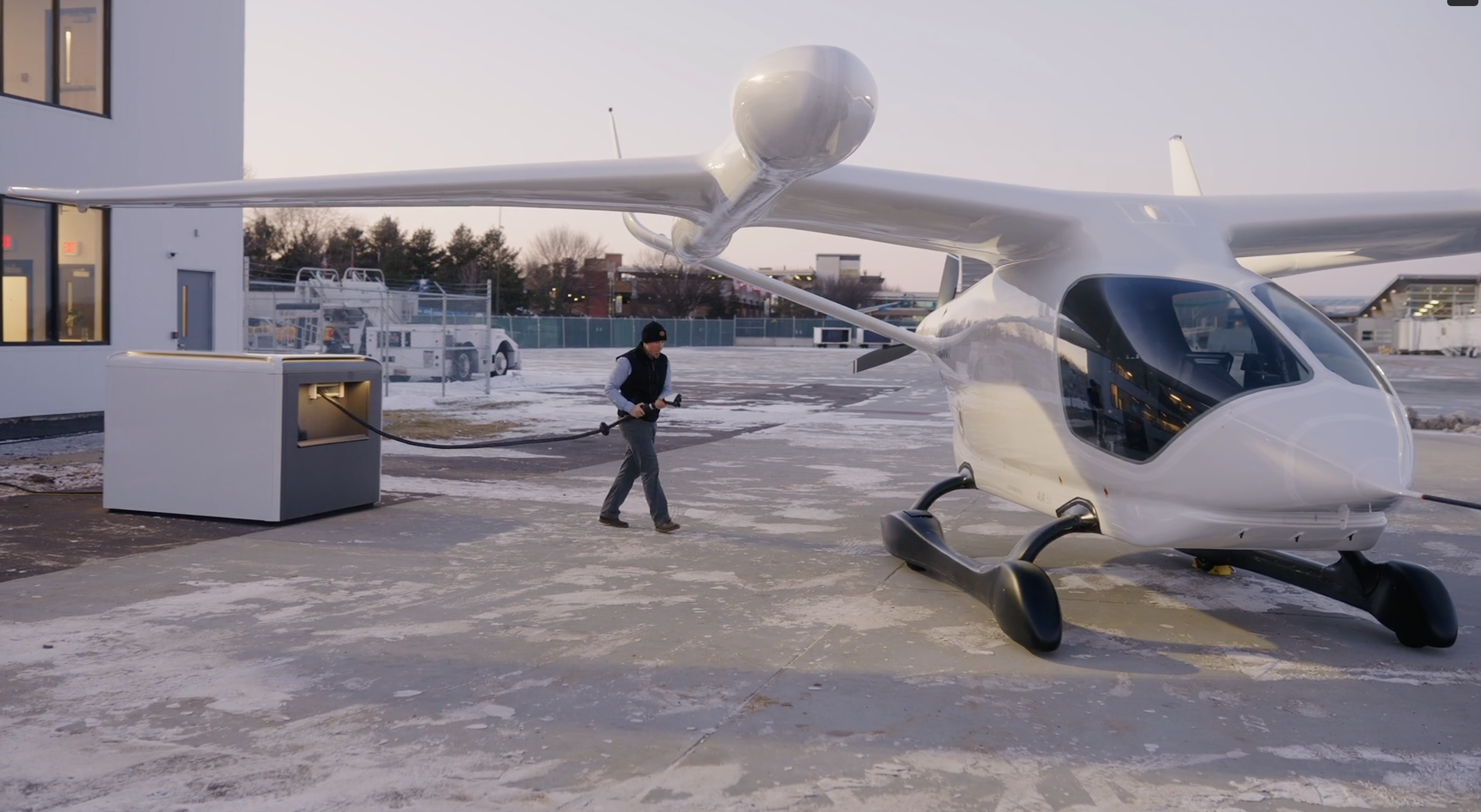
THE NEXT GENERATION
The BETA ALIA eVTOL won’t be making its appearance with Helijet next week, next month – or even next year. There’s still the lengthy certification process to go before the aircraft can be put into commercial use.
But the announcement is still highly significant. It signals a commitment on the part of Helijet, CAAM, and the Government of British Columbia toward a low-carbon AAM world. It will open the door to servicing communities that currently do not have an affordable option for air transportation or deliveries.
And, according to BC Premier Eby, it’s a perfect fit for the province.
“British Columbia – we’re a quiet champion when it comes to the aerospace industry. One of Kelowna’s biggest employers, KF Aerospace, is obviously in the industry. We also have Cascade Aerospace out in Abbotsford – the biggest employer in the valley. And we have companies like InDro Robotics – and the CEO is here today – using large drones to deliver to remote and rural First Nations Communities out of Vancouver.”
And while Helijet’s new purchase won’t be in service for the immediate future – it’s definitely going to happen. And that’s a very big deal.
“We will soon gather again to celebrate the inaugural flight of the ALIA 250 eVTOL aircraft with Helijet,” said JR Hammond, Executive Director of CAAM. “And that day will make another historic milestone on our journey towards an interconnected aviation ecosystem.”
Helijet started 37 years ago with a single helicopter and a handful of employees; it’s now North America’s largest scheduled helicopter airline. Company President and CEO Danny Sitman says this is a natural evolution.
“We were disrupting aviation 37 years ago…Today marks another significant milestone, not just for us but for all British Columbians… We have made a firm order for four aircraft at this time, with an option for four more. It’s an exciting time for aviation right now.”
And it is.
Below: The BETA ALIA cTOL in flight
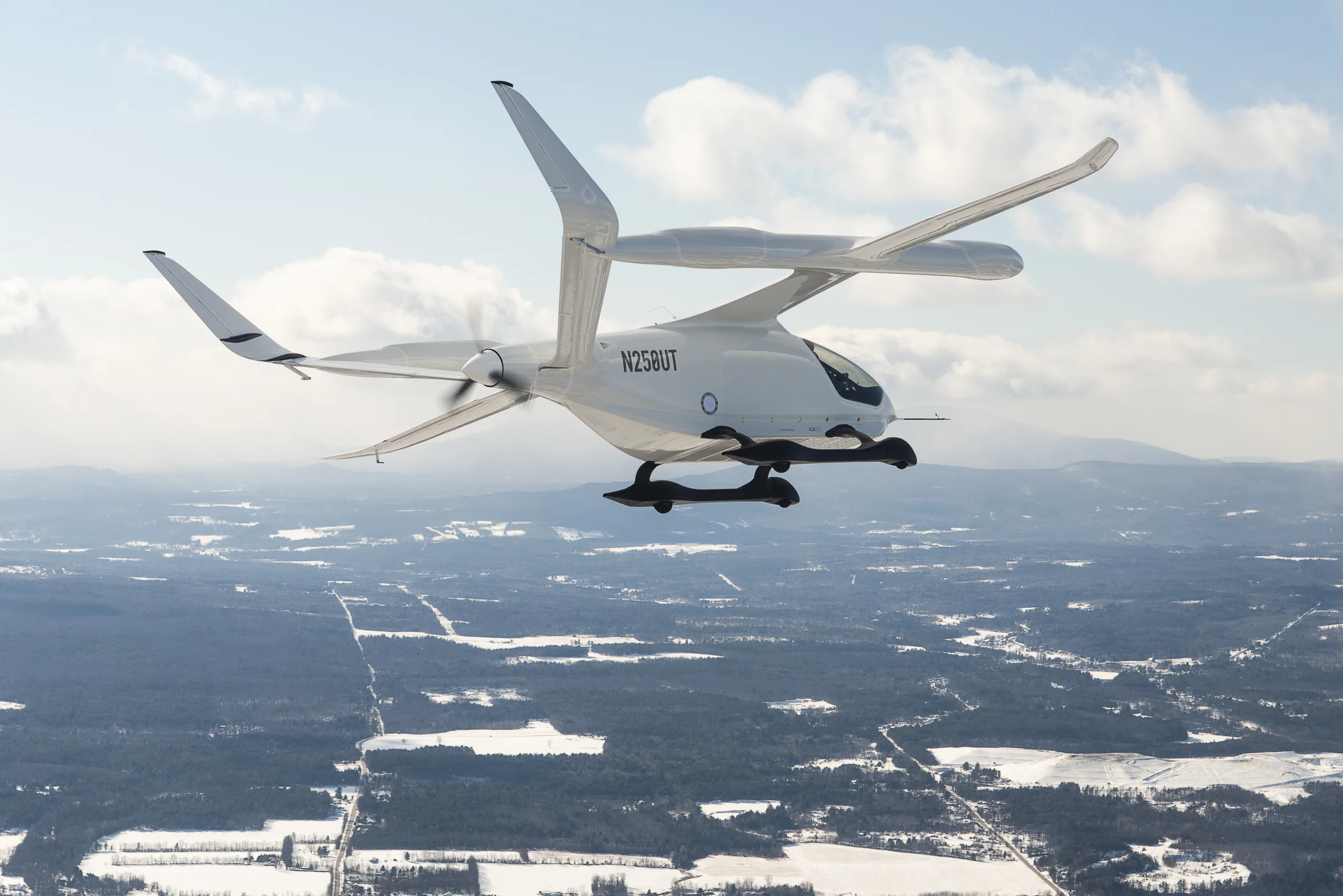
INDRO’S TAKE
InDro Robotics has a vested interest in the coming world of Advanced Air Mobility. We have carried out multiple missions, pilot projects and research tests related to this next phase in aviation. In fact, one of them has been in conjunction with Helijet.
InDro recently flew from Helijet’s Vancouver Harbour facility, piloting our drone through a flight corridor designed to virtually eliminate any potential conflict with crewed aviation – while still flying in a dense urban centre with regular air traffic.
We also used that flight to map the strength of 5G cellular signals at different altitudes – data that will be useful in the coming AAM world of automated BVLOS drone flights. We have also long been committed to sustainable, low-carbon footprint technologies.
“We’re pleased to see Helijet take the lead by committing to a sustainable, passenger-carrying eVTOL,” says InDro Robotics CEO Philip Reece. “We are truly on the cusp of a transformative phase in aviation, and we applaud Helijet, CAAM and BETA on today’s important announcement. I look forward to a flight in the ALIA when it enters service here in BC.”


